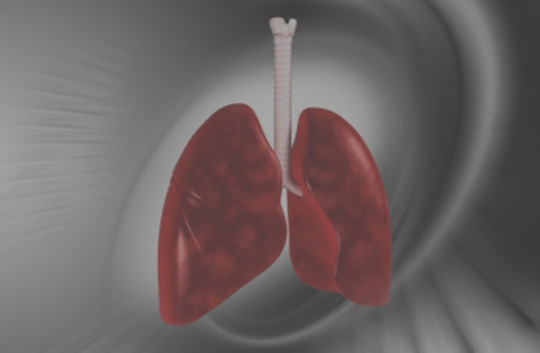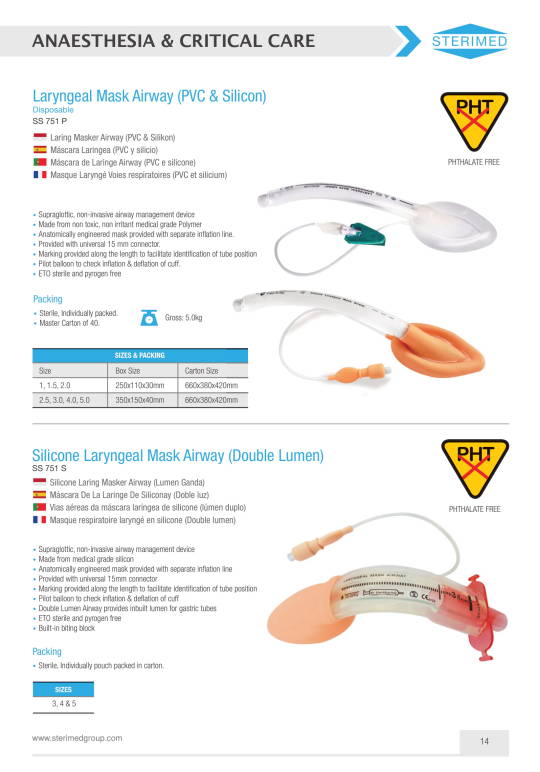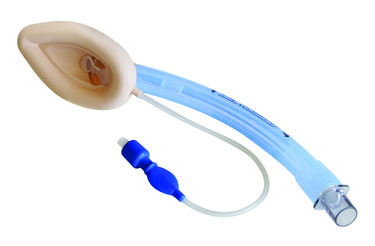#supraglottic airway devices
Text
0 notes
Text
ACLS Certification: Advanced Life Support for Critical Care
Introduction:
ACLS (Advanced Cardiac Life Support) Certification is an advanced training program designed to equip healthcare professionals with the skills and knowledge necessary to manage and respond to complex cardiovascular emergencies. ACLS focuses on providing timely and efficient interventions to improve patient outcomes in critical situations such as cardiac arrest, stroke, or other life-threatening events. This article explores the significance of ACLS Certification, highlighting its role in enhancing patient care and saving lives.
BLS Certification
ACLS
ACLS Certification
PALS
NRP
The Importance of ACLS Certification:
youtube
ACLS Certification is vital for healthcare professionals working in critical care areas, emergency departments, and intensive care units. It builds upon the foundation of BLS (Basic Life Support) by introducing advanced techniques and algorithms for assessing and managing patients in critical conditions. ACLS training enhances professionals' ability to quickly recognize and respond to cardiac and respiratory emergencies, ensuring optimal patient care.

PDRE UCR AMSA OFFICE
900 University Ave.
Riverside, CA 92521
1-909-809-8199
Advanced Cardiac Resuscitation:
ACLS Certification focuses on advanced cardiac resuscitation techniques, including high-quality CPR (Cardiopulmonary Resuscitation), airway management, and the administration of medications and electrical therapies. Healthcare providers learn to assess the patient's cardiac rhythm, interpret ECG (Electrocardiogram) readings, and determine the appropriate interventions based on algorithms and guidelines. ACLS training enables professionals to provide comprehensive and coordinated care during cardiac arrest situations.

Pharmacological Interventions:
ACLS Certification encompasses a comprehensive understanding of various medications used in emergency cardiac care. Professionals learn to administer medications such as antiarrhythmics, vasopressors, and thrombolytics. They gain knowledge of appropriate drug dosages, indications, contraindications, and potential side effects. This knowledge allows healthcare providers to make informed decisions and provide timely pharmacological interventions to stabilize patients in critical conditions.
Advanced Airway Management:
ACLS Certification focuses on advanced airway management techniques, including endotracheal intubation, supraglottic airway device insertion, and proper use of adjuncts such as bag-mask ventilation. Healthcare professionals learn the skills required to secure the patient's airway and ensure adequate oxygenation and ventilation. These techniques are critical in managing patients with compromised respiratory function or in need of prolonged ventilatory support.

Team Coordination and Communication:
ACLS Certification emphasizes effective teamwork and communication during critical situations. Healthcare providers learn the importance of clear and concise communication, role assignment, and task prioritization. ACLS training promotes a systematic approach to patient care, ensuring efficient coordination among team members and maximizing the chances of successful resuscitation and improved patient outcomes.
Conclusion:
ACLS Certification is an essential qualification for healthcare professionals involved in critical care settings. By obtaining ACLS Certification, healthcare providers gain advanced skills and knowledge necessary for managing complex cardiovascular emergencies. The training covers advanced cardiac resuscitation techniques, pharmacological interventions, advanced airway management, and emphasizes effective teamwork and communication. ACLS-certified professionals play a critical role in improving patient care, increasing the likelihood of positive outcomes, and saving lives in high-stakes medical situations.
0 notes
Text
0 notes
Text
0 notes
Text
Airway management devices Market size to surpass around $3.1bn by 2031
Global Airway Management Devices Market is expected to reach $3.1bn by 2031 growing at a CAGR of 6.1% between 2021 and 2031.
Airway management devices are generally used for maintaining/restoring ventilation in a patient. It also comprises evaluating, planning, and using different medical procedures to treat patients with respiratory failures or acute obstruction. Moreover, it also protects the lungs from injury and provides gas exchange facilities to the patients. Some of the frequently used airway management devices to keep the upper airway open for offering unobstructed ventilation are supraglottic airway devices (SADs), Infraglottic airway devices, laryngoscopes, resuscitators, and cricothyrotomy kits.
To Remain 'Ahead' Of Your Competitors, Request for A Sample – https://www.globalinsightservices.com/request-sample/GIS10234
Market Segments
By Type
· Infraglottic Airway Management Devices
o Endotracheal Tubes
o Tracheostomy Tubes
· Supraglottic Airway Management Devices
o Laryngeal Mask Airways
o Oropharyngeal Airways
o Nasopharyngeal Airways
Key Players of Global Airway Management Devices Market
The key players of global airway management devices market are Medtronic plc, Smiths Medical, Teleflex Inc., Ambu A/S, Convatec Group plc, KARL STORZ, Flexicare, Intersurgical Ltd., SunMed LLC, Vyaire Medical, VBM Medizintechnik, Verathon, SourceMark, Mercury Enterprises, TRACOE medical and Olympus Corp. among others
Market Drivers
Increasing demand for emergency and intensive care
Patients suffering from infectious, chronic, and cardiac conditions frequently undergo airway complications, which require immediate treatment. Likewise, road accident victims and people suffering from other trauma injuries may require immediate airway clearance to ensure their safety. Owing to the high number of such cases, the demand for airway management devices is increasing across the world. According to CDC, in 2014-2017, the emergency department (ED) visit rate for persons aged 60 and over was 43 visits per 100 persons aged 60 and over and increased with age, from 34 visits per 100 persons aged 6-69 to 86 visits per 100 persons aged 90 and over. About 30% of patients aged 60 and over who visited emergency departments arrived by ambulance, and this percentage increased with age.
With Global Insight Services, you receive:
· 10-year forecast to help you make strategic decisions
· In-depth segmentation which can be customized as per your requirements
· Free consultation with lead analyst of the report
· Excel data pack included with all report purchases
· Robust and transparent research methodology
About Global Insight Services:
Global Insight Services (GIS) is a leading multi-industry market research firm
headquartered in Delaware, US. We are committed to providing our clients
with highest quality data, analysis, and tools to meet all their market research
needs. With GIS, you can be assured of the quality of the deliverables, robust
and transparent research methodology, and superior service.
Contact Us:
Global Insight Services LLC
16192, Coastal Highway, Lewes DE 19958
E-mail: [email protected]
Phone: +1-833-761-1700
0 notes
Link
#the insight partners#airway management devices#infraglottic device#endotracheal tube#tracheostomy tube
0 notes
Text
The infraglottic devices segment held the largest share of the airway management devices market in 2021; however, the supraglottic devices segment is anticipated to register the highest CAGR of 7.2% during (2022-2028). The Asia Pacific region is estimated to grow at the fastest CAGR of 7.3% during the forecast period.
0 notes
Link
Asia-Pacific airway management device market is expected to gain market growth in the forecast period of 2020 to 2027. Data Bridge Market Research analyses that the market is growing with a stronger CAGR of 6.1% in the forecast period of 2020 to 2027 and expected to reach USD 868.66 million by 2027.
0 notes
Text
The Airway is a complicated system that help the body to breath and exhale
According to Dr. Vladimir Pastouk, the Airway is a complicated system that permits the organism to breathe and exhale. The upper airways are composed of alveoli, which are blind-ended pockets linked to capillaries. These sacs play a crucial role in the formation of the air-blood barrier. During the embryological development of the head, the upper airways grow from the pharyngeal arches. They are in charge of transporting oxygen and nutrients throughout the body.
When it comes to airway control, there are several options available. The most significant aspect in adult critical care, pediatrics, and neonatal intensive care is airway control. Basic and advanced airway management are the two primary categories. Simple, noninvasive treatments such as abdominal thrusts and back blows are used in basic airway management strategies, which do not need specialist equipment or expertise. Specialized equipment, such as cardiopulmonary resuscitation and supraglottic airway devices, is used in advanced airway management procedures.
The airway is made up of three sections: bronchioles, alveoli, and terminal bronchioles. The alveolar ducts connect to each bronchiole and end in around 100 alveolar sacs. Alveoli are parenchymal cells with thin walls that provide oxygen and carbon dioxide to the body. To achieve this diffusion, the diaphragm contracts and relaxes during breathing.
Dr. Vladimir Pastouk points out that colored airways were developed to assist pilots in identifying high-risk locations while flying over coastal seas. These paths were built using low-medium-frequency ground stations, a beat frequency oscillator, and non-directional beacons. They are still found in the contiguous United States, although they are very uncommon. The most prevalent colored airways that pass through the Florida Keys are blue and green. The AOPA has asked Alaska pilots to submit feedback on the future of certain airways.
Upper and lower airways make up the respiratory system. The nose, sinuses, larynx, and pharynx are all part of the upper airway. The nostrils, which contain hairs that filter dust particles, allow air to enter the nose. The upper airway is lined by pseudostratified epithelium, which contains goblet cells and cilia that transport air particles out of the airway. These respiratory system components, together with the lungs, assist to clean the air we breathe.
The airways outside the lungs are known as extrapulmonary air conduits, and they originate at the nose, larynx, and throat. They do not participate in gas exchange, but they do offer a path for oxygenated air. They have pseudostratified columnar epithelium lining them. The three-dimensional design of smaller air conduits and gas exchange units is seen in SEM photos. Furthermore, infundibulae run the length of the lungs, giving birth to a plethora of air capillaries.
Dr. Vladimir Pastouk observes that the establishment of new higher air routes above the southwest United Kingdom has been accomplished. The airspace modification request was implemented on November 18, 2014, and is currently operational. The pathways that give the greatest chance to travel through each location, including the higher air routes, will be used by aircraft. But what exactly are they? How do they function? What are the possible advantages for flying travelers? Let's go further into this subject. We'll also analyze at what these new routes entail for passengers and the surrounding airspace.
A proposal has been made to employ a Class C stub to enable connection between lower air routes and Class C airspace above FL245. The comment period for this proposal started on January 13th and concluded on March 10th, 2014. The implementation of Class C stubs will take happen later, but not before September 18th, 2014. These modifications will be coordinated with the transition to Class E airspace.
0 notes
Link
65 notes
·
View notes
Text
Supraglottic Airway Management Devices Market Future Growth Explored in Latest Research Report by 2027 | BD, GE, Olympus, Teleflex, Medline, SonarMed, Smiths Group
Overview of Global Supraglottic Airway Management Devices Market:
The large scale Supraglottic Airway Management Devices Market report sheds light on each region, Market size in terms of (USD Mn) for every individual segment and their sub-segment for the period from 2021 to 2028, considering the macro and micro situation factors. The document gives a brief introduction to the research report outlook, TOC, list of tables and figures, an outlook to key players of the Market and comprising key regions. Additionally, the wide ranging Supraglottic Airway Management Devices Market report helps the manufacturer in finding out the effectiveness of the existing channels of distribution, advertising programmes or media, selling methods and the best way of distributing the goods to the eventual consumers.
An extensive summary of the Supraglottic Airway Management Devices Market comprises prominent Market that includes several major Market leaders in the report. Supraglottic Airway Management Devices report provides guidelines about planning of advertising and sales promotion efforts. The business document necessitates an in-depth analysis pertaining to the product manufactured by the vendors combining with the product application range. The competitive landscape section of the report gives a clear insight into the Market share analysis of key industry players. Supraglottic Airway Management Devices Market report consists of Market attractiveness analysis, wherein each segment is benchmarked based on its Market size, growth rate, and general attractiveness.
Get Sample Report + All Related Graphs & Charts @ https://www.databridgemarketresearch.com/request-a-sample/?dbmr=global-supraglottic-airway-management-devices-market .
The Global Supraglottic Airway Management Devices Market is expected to grow at a CAGR of 8.0% in the forecast period of 2020 to 2027.
According to market research study, Airway management device is a set of medical procedures in order to save or prevent airway obstruction in patients. There are numerus products such as oropharyngeal airway, nasopharyngeal airways, laryngeal mask airways and tracheal incubation used in providing airway in patients who are undergoing anaesthesia procedures in hospitals. This device ensures an open pathway in patients which allows the gas exchange between a patient's lungs and the atmosphere.
Some of most important key factors driving the growth of the Global Supraglottic Airway Management Devices Market are increasing prevalence of chronic respiratory diseases, rising demand for emergency care, rising growth in investments, funds, and grants by government bodies for enhancing emergency care.
Top Leading Key Manufacturers are: Intersurgical Ltd., Olympus Corporation, BD, Teleflex Incorporated, Armstrong Medical Inc., Medline Industries, Inc., Rudolf Riester GmbH (subsidiary of Halma Plc), GENERAL ELECTRIC COMPANY, SonarMed, Mercury Medical, Smiths Group plc, Verathon Inc., VBM Medizintechnik GmbH, SunMed, MEDTRONIC, Flexicare (Group) Limited, VYAIRE, Ambu A/S and others. New product launches and continuous technological innovations are the key strategies adopted by the major players.
In terms of the geographic analysis, North America dominates the supraglottic airway management devices market due to rising supportive government initiatives and substantial implementation of practice guidelines released by healthcare organizations. APAC is the expected region in terms of growth in supraglottic airway management devices market due to increased R&D investment by the global players and the availability of unexplored opportunities in this region.
Access Complete Report Here: https://www.databridgemarketresearch.com/reports/global-supraglottic-airway-management-devices-market .
1 note
·
View note
Text
Laryngeal Mask Airway (PVC and Silicon)

A laryngeal mask airway (LMA) also known as laryngeal mask is a medical device that keeps a patient’s airway open during anesthesia or unconsciousness. It is a type of supraglottic airway device. https://bit.ly/3eST2u5
Call +917015986188, +91-9650832277, +91-11-48880000, +91-11-42466196 or Email: [email protected]
WhatsApp: https://wa.me/917015986188
1 note
·
View note
Text
Airway Management Devices Market Analysis By Size, Share, Emerging Trends, Future Growth, Demand Forecast, Applications | Global Forecast to 2027
Brief Overview:
The global airway management market report, as discussed in detail by Market Research Future (MRFR) in their report, discloses possibilities of the market reaching a substantial USD 1764.47 million with a 5.2% CAGR over the forecast period (2019-2025).
Free Sample Copy of With Considering Coivd19 Impact on this Market @ https://www.marketresearchfuture.com/sample_request/8472
Airway management system relies on detailed maneuvers and medical procedures that are necessary to prevent and, if needed, relieve airway obstruction. The process tries to establish a connection between a patient's lungs and the atmosphere to provide relief. Various factors are impacting the global airway management market and MRFR tried to analyse them in their latest report. These are the rising instances of chronic obstructive pulmonary diseases, adoption of advanced technologies with substantial takers, increasing initiatives to make people and various organizations aware of the needs of these advanced systems, and surge in traffic accidents that require immediate relief. Technological advancement is playing a crucial role in deciding the future of the market as several companies are looking at it as an advantageous factor that could lift their market prospect.
However, the risk associated with dealing neonatal cases is substantial. Also, the lack in expert hands to operate such complicated devices can curb the airway management market prospect.
Segmentation:
MRFR’s take on the airway management Market is based on product type, application, and end user. Insights from this segmentation are expected to help proper understanding of the market.
By product type, the global airway management market can be segmented into supraglottic, anesthesia masks, laryngoscopes, accessories, infra-glottic, and others. The supraglottic segment would dominate the global market.
By application, the report on the airway management market would includes general anesthesia, surgery, respiratory care, and others.
By end user, the airway management market report can be segmented into surgical centers, hospitals, and others. In hospitals, the system is expected to gain better inclusion.
Regional Analysis:
North America would display their strength in the market and is expected to outperform other regions in the coming years. This is primarily due to the increasing structural change in the region. Superlative infrastructure, high investment capacity, better support system in time of need, and others are expected to boost regional market setup.
The growth in Europe would follow the same trail as countries like Russia, France, Germany, the UK, and others offer the same kind of outlook like that of North American countries like the US and Canada.
In Asia Pacific, the airway management market would depend much on the emerging economies. These economies are spending to develop their healthcare sector and inspire better upgradation. Such endeavors would create scope for increased intake of airway management.
Competitive Analysis:
Various global players are showing notable interest in the airway management market to profit from its mandatory inclusions in several healthcare organizations. These companies and their strategic implementations are expected to make sure the market does not remain stagnant in the coming years. The strategic inputs include various mergers, acquisitions, new product launches, innovations in methods, and others to ensure better market strategies. These companies are Salter Labs (US), Medtronic (Ireland), Smiths Group PLC [UK] (Smiths Medical), Teleflex Incorporated (US), Sunmed (US), Vyaire Medical (US), Roper Technologies (US) (Verathon Inc.), Sourcemark (US), Ambu A/S (Denmark), Vbm Medizintechnik GmbH (Germany), Intersurgical Inc (UK), and others.
Industry News:
In March 2020, Pouchot Dentistry of Gloucester announced that they would launch several other services to make sure that their patients get the best-quality support. Among these extended services, proper airway management would play a dominant role.
LIST OF FIGURES
FIGURE 1 RESEARCH PROCESS
FIGURE 2 MARKET STRUCTURE FOR THE GLOBAL AIRWAY MANAGEMENT MARKETMARKET
FIGURE 3 MARKET DYNAMICS FOR THE GLOBAL AIRWAY MANAGEMENT MARKETMARKET
FIGURE 4 GLOBAL AIRWAY MANAGEMENT MARKETMARKET SHARE, BY PRODUCT TYPE, 2020 (%)
FIGURE 5 GLOBAL AIRWAY MANAGEMENT MARKETMARKET SHARE, BY TECHNIQUES, 2020 (%)
FIGURE 6 GLOBAL AIRWAY MANAGEMENT MARKETMARKET SHARE, BY APPLICATION, 2020 (%)
Read Complete Report @ https://www.marketresearchfuture.com/reports/airway-management-market-8472
About Market Research Future:
At Market Research Future (MRFR), we enable our customers to unravel the complexity of various industries through our Cooked Research Report (CRR), Half-Cooked Research Reports (HCRR), Raw Research Reports (3R), Continuous-Feed Research (CFR), and Market Research & Consulting Services. MRFR team has the supreme objective to provide the optimum quality market research and intelligence services to our clients. Our market research studies by Components, Application, Logistics, and market players for global, regional, and country-level market segments, enable our clients to see more, know more, and do more, which help to answer all their most important questions. In order to stay
updated with the technology and work process of the industry, MRFR often plans & conducts meet with the industry experts and industrial visits for its research analyst members.
Contact:
Market Research Future
Office No. 528, Amanora Chambers
Magarpatta Road, Hadapsar,
Pune – 411028
Maharashtra, India
+1 646 845 9312
Email: [email protected]
#Airway Management market 2021#Airway Management market report#Airway Management market Growth Factors#Global Airway Management market#A
1 note
·
View note
Text

A laryngeal mask airway (LMA) — also known as laryngeal mask — is a medical device that keeps a patient's airway open during anaesthesia or unconsciousness. It is a type of supraglottic airway device.
I saw an LMA used in a D&C today. It's good for quick procedures.
1 note
·
View note
Link
Asia-Pacific airway management device market is expected to gain market growth in the forecast period of 2020 to 2027. Data Bridge Market Research analyses that the market is growing with a stronger CAGR of 6.1% in the forecast period of 2020 to 2027 and expected to reach USD 868.66 million by 2027. Increase in prevalence of chronic diseases and high incidence of preterm births is the factors for the market growth.
0 notes
Link
0 notes